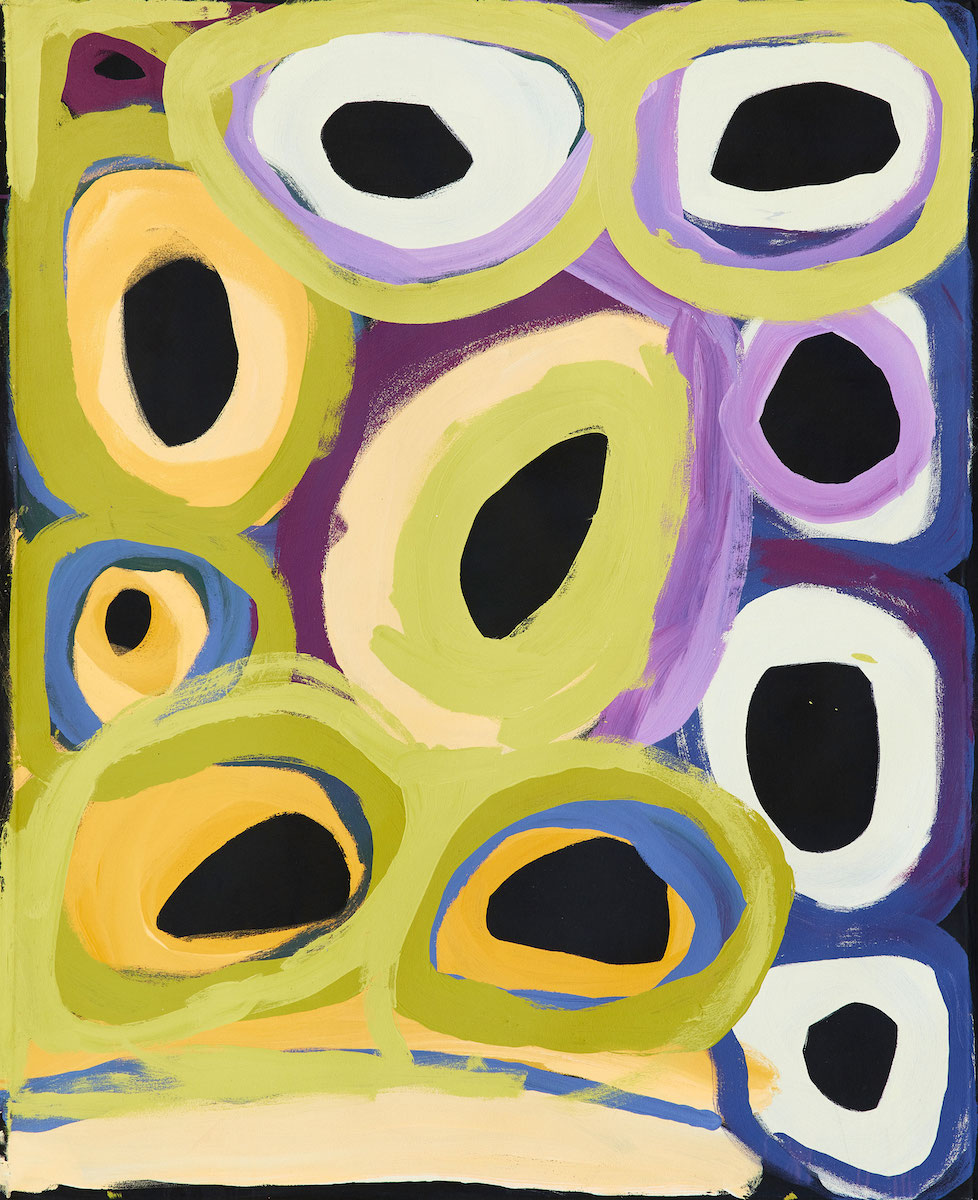
– CATALOGUE ESSAY: KATJARRA
Life in the Western Desert during the early days represents a way of living that many will never experience, or truly grasp. My nana, Katjarra Butler, lived this life – living off the country, walking vast distances through extremely barren parts of the continent.
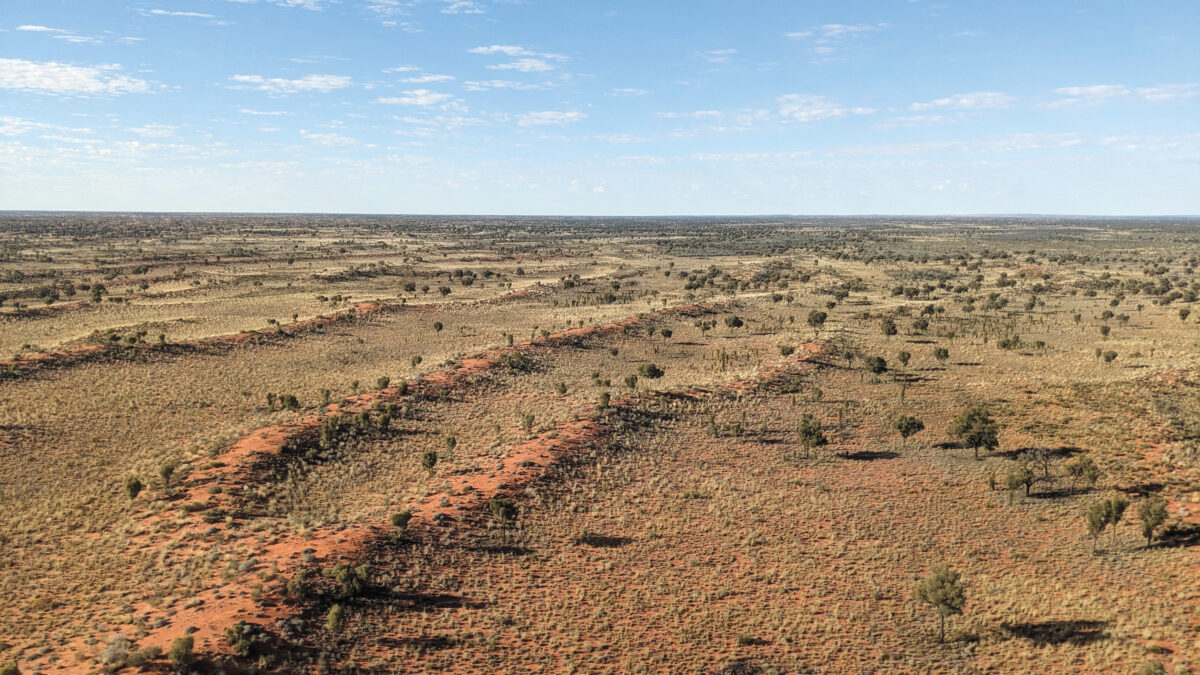
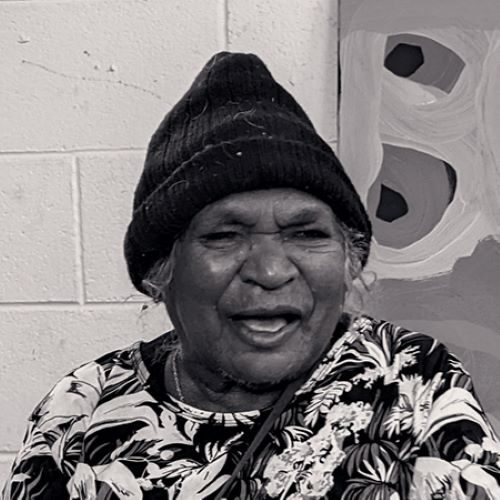
Katjarra had left the old way of life when anthropologist and Patrol Officer Jeremy Long, and Tracker Nosepeg Tjupurrula came across Katjarra and her family on the eastern side of a place called Mantardi (Dovers Hills) at a small outcrop known as Tjungin. At this point Katjarra’s life changed forever. She was moved to the settlement of Papunya where she was to live for approximately fifteen years. Eventually she moved closer towards her home country living in Kaltukatjara (Docker River), then finally moved to Tjukurla when the outstation was established in 1981.

In this exhibition, Katjarra’s work features a visual narrative from her home country, between Karrkurrintja (Lake Mcdonald) and towards the west approximately 150km at a place called Karrku (Baron Range). There are many water sources across the Western Desert in the form of soakages, claypans, rockholes, and springs. Each of her paintings capture different sources of water that she had a close relationship with through her cultural connections and lived experience.
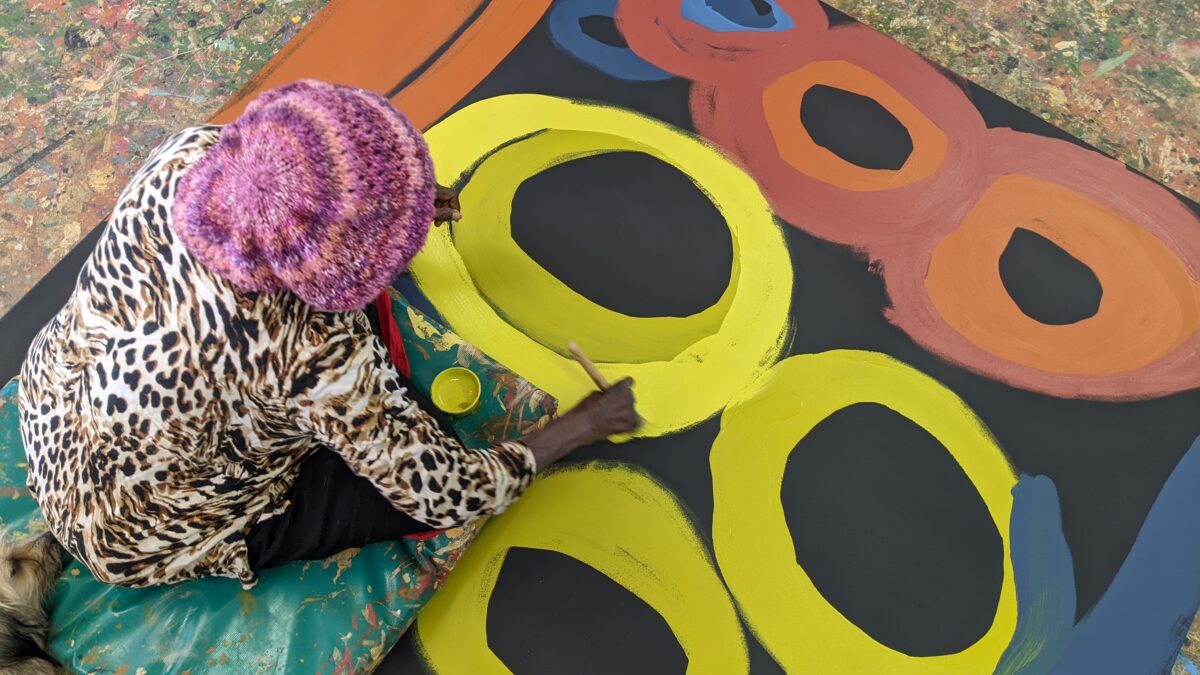
The Pintupi are always guided by the Tjukurrpa, which explains the very existence of people, traditions and culture, and how the country looks after them. All life is a continuous recreation of Tjukurrpa.
The Tingarri travelled across many language groups throughout the western desert, such as Ngaanyatjarra and Pitjantjarra. They are significant Tjukurrpa beings. Through their travels during the Tjukurrpa, they brought to people a way of life and created the totemic landscape before finally turning to stone. Katjarra is the Python from Korrmangutja.
Anangu in this part of the country are forever part of the Tingarri, either through themselves or the people they have descended from. At Ngamarru a group of Tingarri women wait as they collect and eat a bush tucker wanpurru, they are all of the Nangala kin group. As they wait another group of Tingarri women of the Nangala and Nungarrayi kin travel past towards the north. The group of Nangala then leave to the east to Papuun and Ngartarn.
There have been other people before Katjarra who were the python and held the responsibilities of Patjantja. People always recreated and reacted the Tjukurrpa through their relationship with country. The Tingarri Yawalyurru (Blackcurrant bush) is predominant Tjukurrpa in this part of the country, stretching between Karrkurrintja and close by Karrku, Katjarra and her family had been guided by this Tjukurrpa, and identify with this.
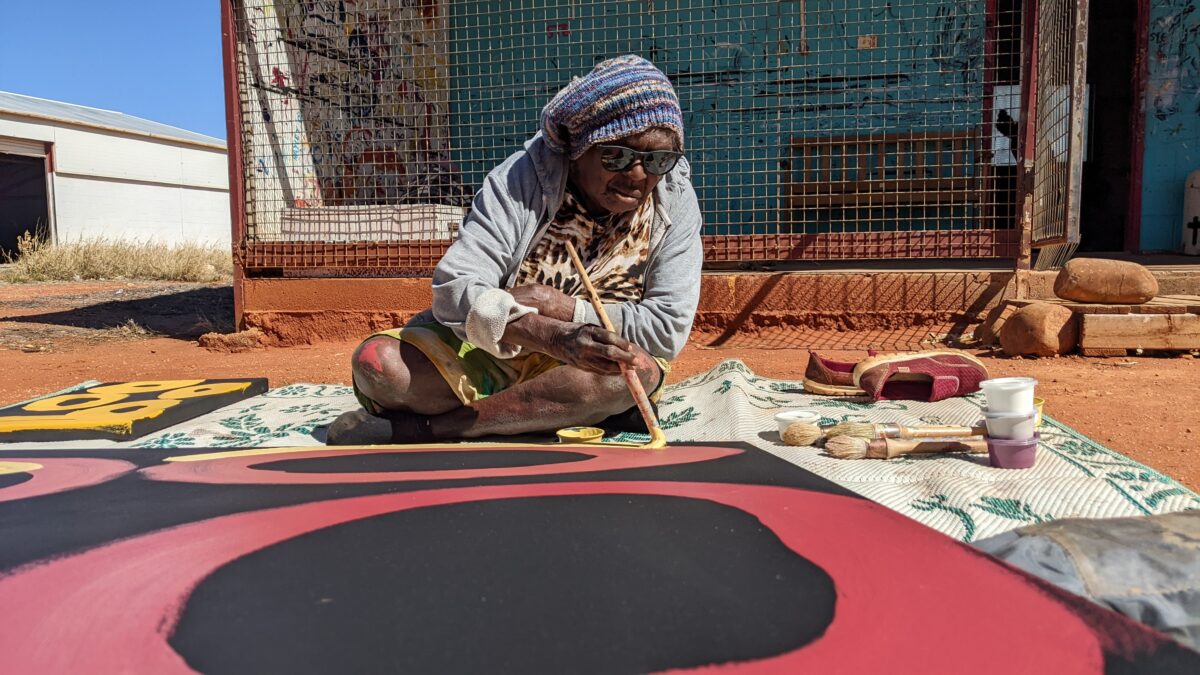
The works of art in this exhibition are a selection of the places that come from Katjarra’s memories of the early times in the Western Desert. Hers is a photo-like memory that has resonated into the world we live in today. She takes us to places that only she knows, and takes us to a map, a window to the early days. Using a mix of acrylic colours, Katjarra re-creates her past by painting ancient Pintupi/Ngaanyatjarra symbols to produce her story. With bold colours and broad, energetic brush strokes, my grandmother continues to preserve her culture and stories of life in the Western Desert.
WINSTON GREEN
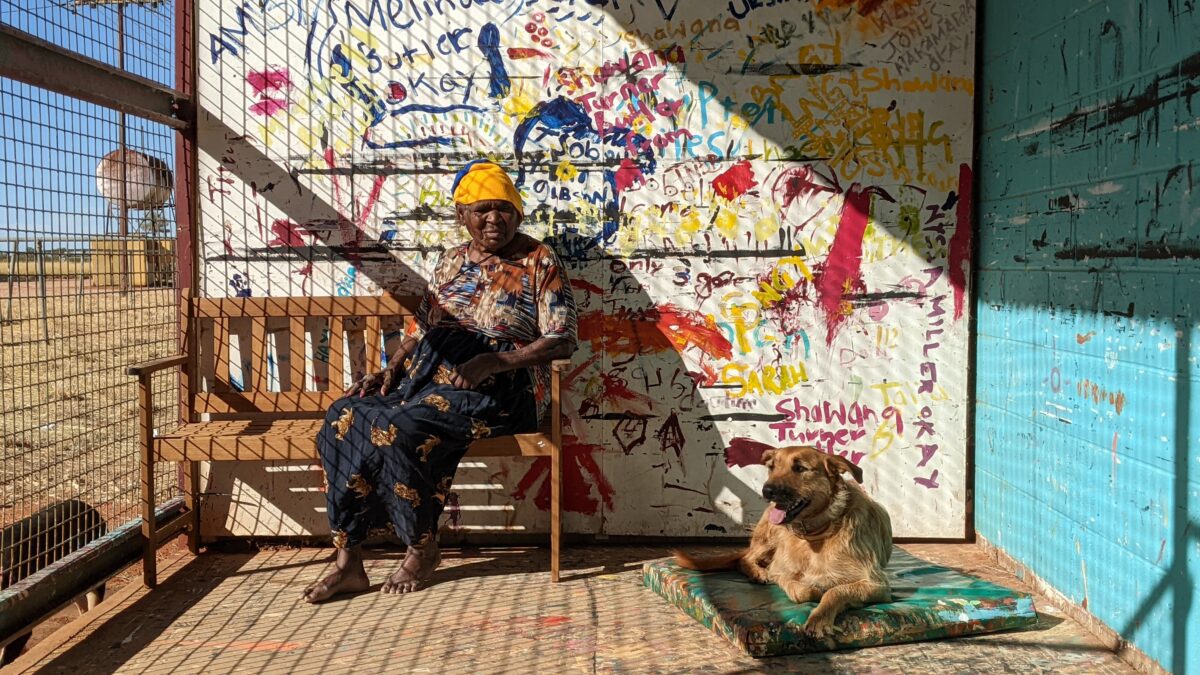
Locations, names and details of sites featured in this exhibition:
Warlukitjirri – Rocky outcrop between Emery Range, WAand Bonython Range, WA.
Yumari – Large rockhole between Winbarrku (Mount Webb) and Mantardi (Dovers Hills) among sandhill country.
Ngamaru – Soakage on the southwestern portion of (Tuwa) Lake Anec, WA.
Nyuntuun – Soakage south of Karrku (Baron Range, WA) among sandhill country.
Wingantjirri – Rockhole on the southwestern portion of Lake Orantjugurr, WA
Papuun – Large rockholes to the east of Wanatjal (Gordon Hill, WA) among sandhill country.
Winston Green is a Pintupi/Luritja man who lives and works in Central Australia. He is an anthropology graduate from The University of Western Australia and a consultant for the Strehlow Research Centre. He works with Tjarlirli Art to document cultural material, map country, and record songs and stories of his family and country in the Western Desert.




